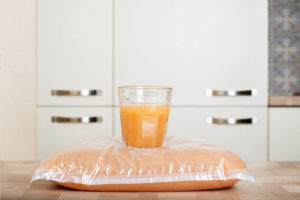The high barrier film industry structure is a complex web of global players, substrates, barrier methods, and applications. The high barrier film market is expected to reach US$ 1.4 billion by 2023, with further growth anticipated over the next five years. This article will offer you information about the competitive landscape for the high barrier films industry.
Demand Growth of High Barrier Film
The global market for high barrier films is expected to grow at a CAGR of 8.7% from 2020 to 2022, according to a significant source. The growth of this industry is mainly due to increasing demand for grab-and-go foods. Food and beverage packaging barriers are becoming more important as customers are increasingly turning to convenience over nutrition and health. In addition, manufacturers are increasingly focusing on product development to meet rising consumer demand.
High Barrier Films market is forecast to reach USD million by 2028. The growth in this region is attributed to a high demand from end-use industries in countries such as China, Japan, and India. Moreover, rising environmental concerns and a trend towards sustainability are creating growth opportunities in this market.
high barrier films must meet standards to ensure that they do not leak or clog. They are also better suited for pharmaceutical packaging. The market for high barrier films is expected to grow fastest in the Asia-Pacific region, where the working population is increasing. There are many potential markets in this region for these films, and manufacturers must be aware of the factors driving growth in the region.
Application of High Barrier Film
High barrier films are becoming increasingly popular for a variety of applications, from food packaging to pet food. Their ability to maintain crunchiness and freshness is crucial in the case of cereals. This kind of packaging can also be used to protect processed foods and preserve the aroma of coffee and tea. It is also an excellent option for pet food. In fact, the demand for flexible packaging has become so high that manufacturers have taken up this process to improve their products.
High barrier films are essential for the preservation of products, and their barrier properties can include moisture, gas, and aroma. They play an important role in providing these properties while extending the shelf life of packaged goods. Additionally, the films are recyclable, making them an environmentally-friendly packaging option. Furthermore, their co-extruded structure is resilient and impermeable. These films are solvent-free and do not react with packaged food.
High Barrier Film Cost
The demand for high barrier packaging film is increasing primarily due to convenience and product safety. Consumers are moving away from fresh produce and towards products that have a longer shelf life. Microwave cooking and busy lifestyles are also driving the use of such products. These products are also challenging traditional rigid pack formats such as glass jars and metal tins. In 2022, the global market for high barrier packaging film is projected to grow to nearly 1.86 million tonnes.
The food packaging industry is expected to be the largest market for barrier films, with the shift from rigid packaging to flexible packaging supporting down-gauging. Rising consumer preference for fresh foods and incentives from governments have all boosted the market for barrier films. Other industries requiring higher barrier packaging include pharmaceuticals, which are anticipated to grow in the coming years, owing to increased healthcare expenditure and the advent of new drug formulations. Therefore, the cost of high barrier films is likely to continue rising.
The Bottom Line
The food & beverage industry is increasingly demanding high barrier films for their packaging solutions. As disposable incomes rise, consumers are spending more on packaged and ready-to-eat foods. High barrier films are necessary for these items, which make them easy to transport and prepare, making them a valuable resource for food manufacturers.


